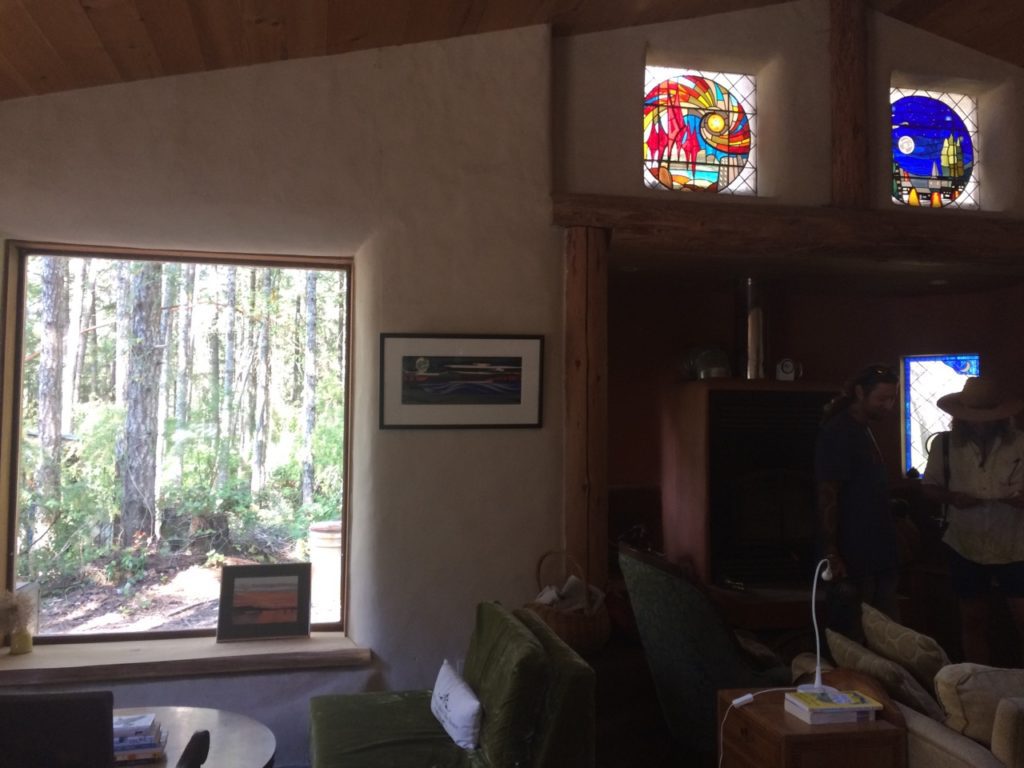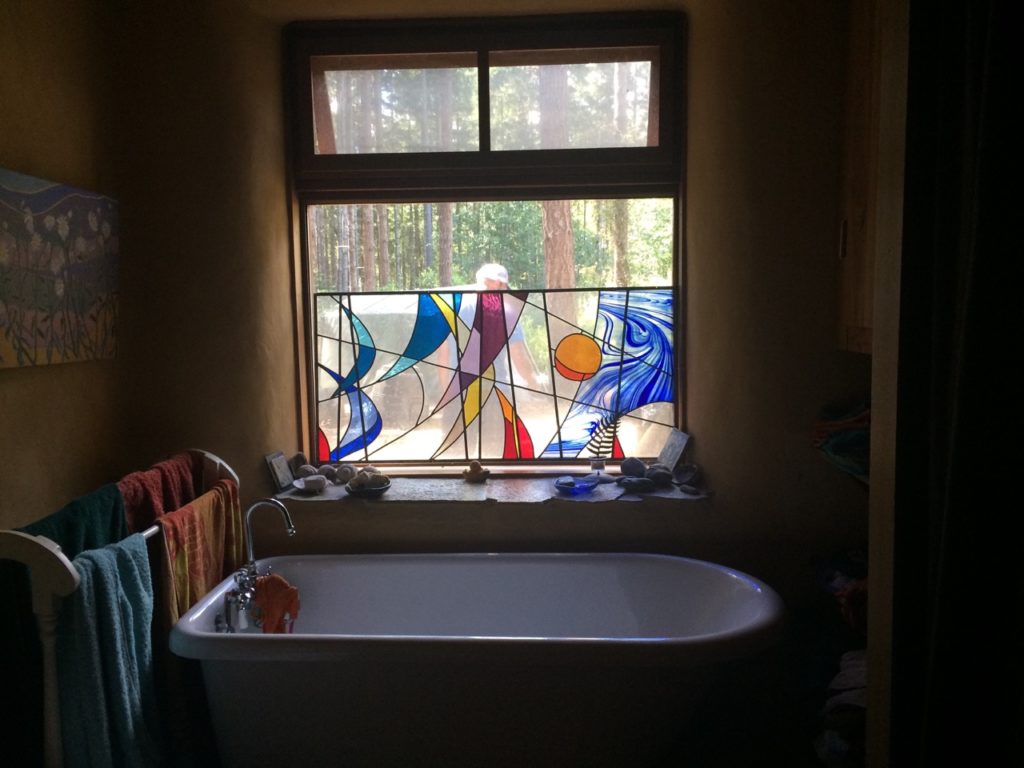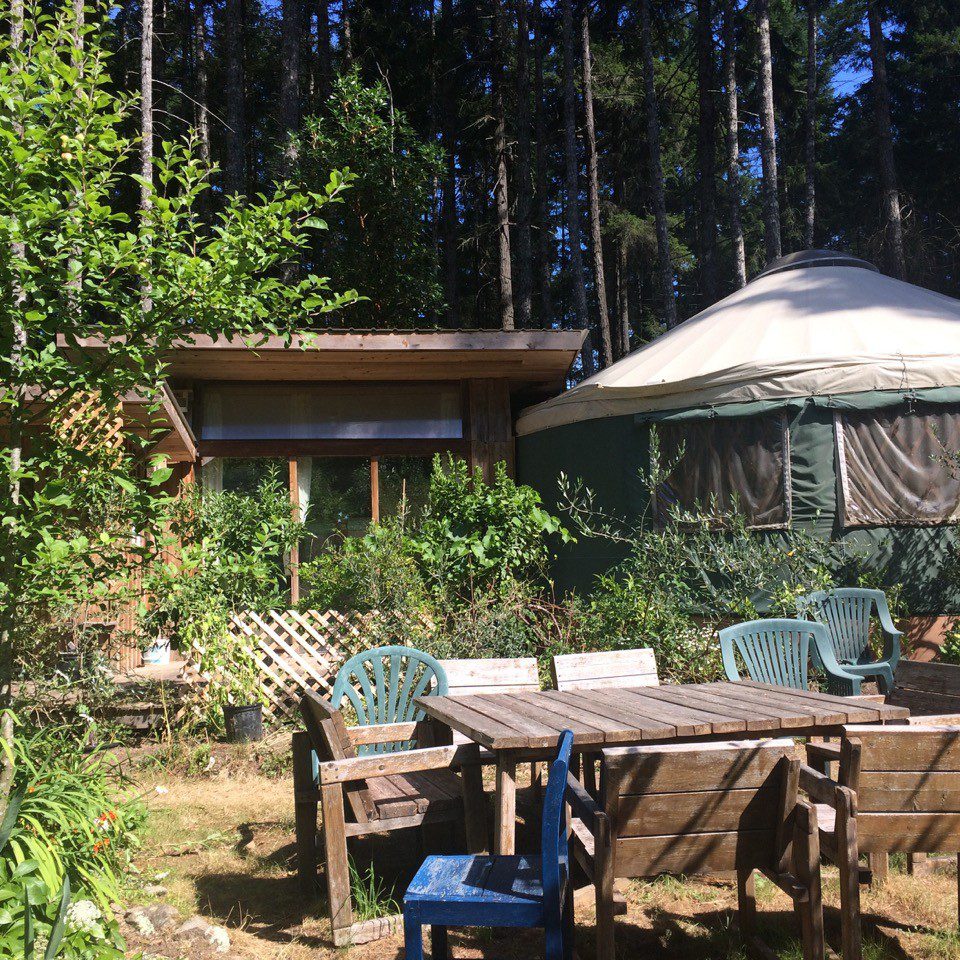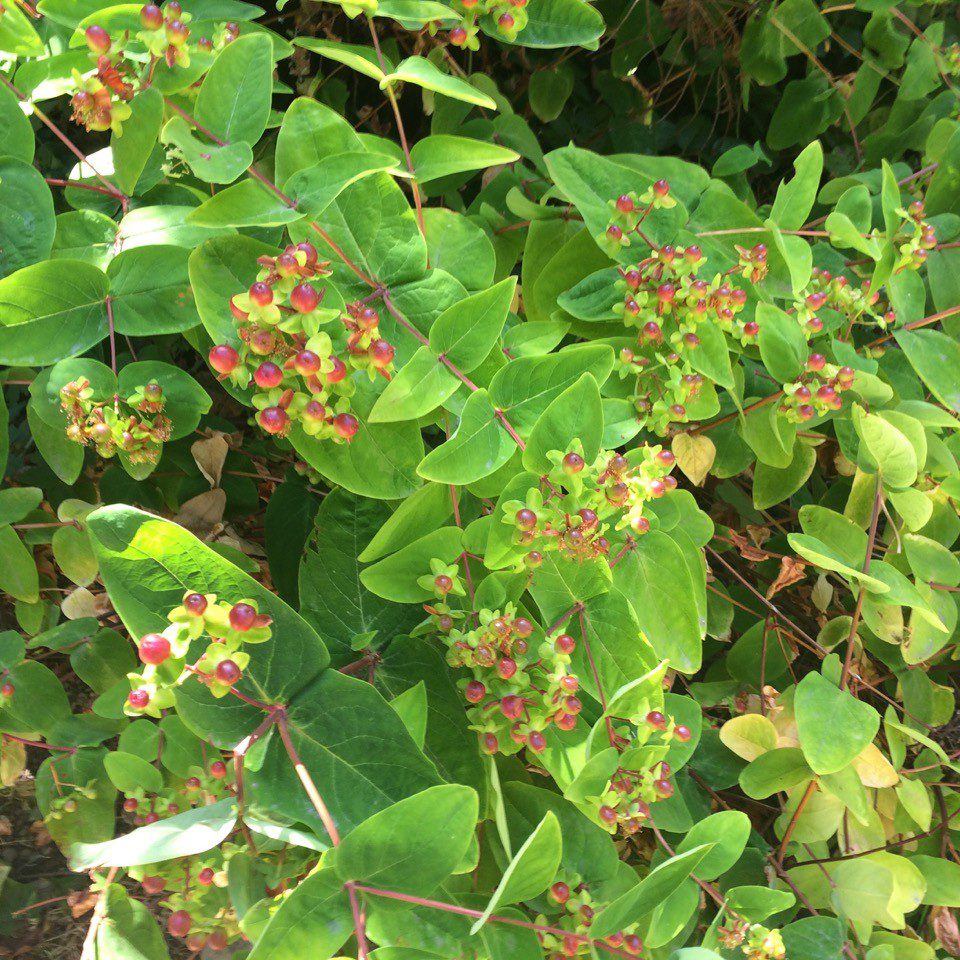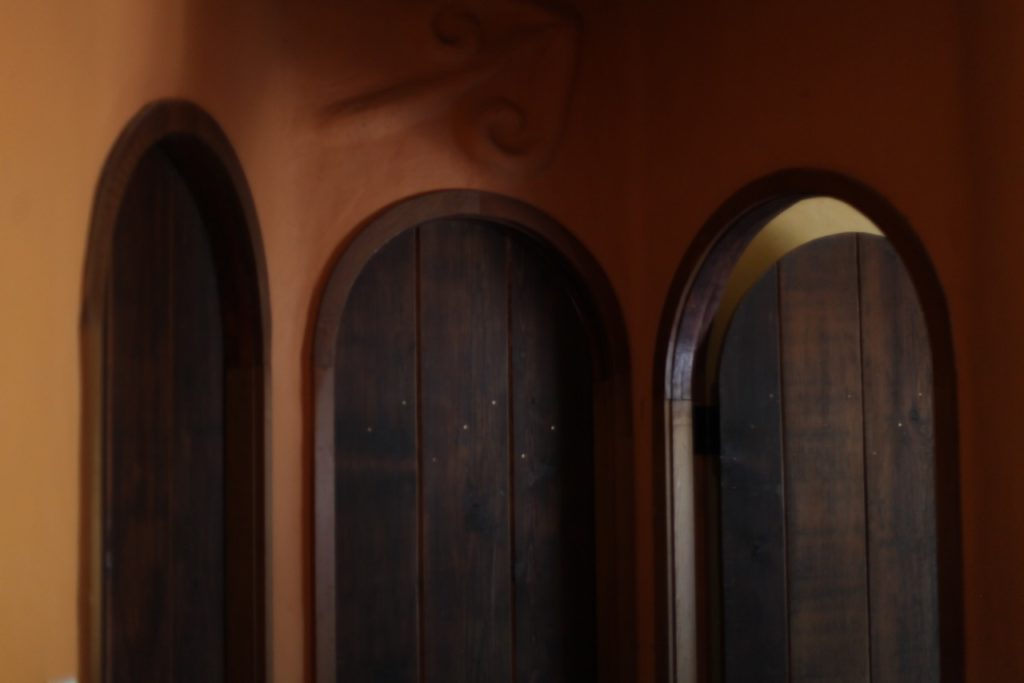Off-grid straw bale home: Andrew & Adina
1350 sq. ft home; water catchment system, greywater systems, passive solar design, solar panels for electricity, solar hot water panels for radiant floor heating. Plus yurt and permaculture gardens. Close to Ganges for easy commuting.
Yurt
Temporary lightweight shelter with a wood floor on a platform on 20 concrete footing pads. Plus straw bale and cob bathroom, with rain water collection and a
propane on-demand water heater. Thermal envelope measures Load-bearing hemp bale walls, truss roof with ridge beam supported by poles cut from own land. R-44 Rock wool insulation in ceiling. Slab insulated with R- 12.5 extruded polystyrene. Glazing: mainly reused sealed units. Air barrier: plaster forms the wall air barrier; and polyethylene in ceiling.
Heating system
Efficient RSF Opal wood stove ducted to bathrooms. Solar radiant floor heating system for solar collect or system. Propane on-demand water heater with electric ignition (battery operated).
Lights, appliances
Nova Kool energy-efficient DC refrigerator. Propane stove. All lights LED. Low EMR wiring. Energy Star Staber washing machine.
Renewable energy systems
PV system with two arrays. Main array is 6 x 255 w Canadian Solar panels controlled by a Midnite Solar Classic charge controller. The second is 4 x 123 w
Sharp panels controlled by an Outback charge controller. Storage is 6 x 2 volt deep-cycle batterie s.
Combination of AC and DC wiring. Control panels to monitor power in/out.
Water
Rainwater catchment from yurt-cabin into 2,500 gal. underground tank. House rainwater catchment from metal roof into 400 gal. flash tank, through a Davnor sand filter, into two 1,325 gal. underground concrete tanks. House water through 5 micron and carbon filters. Drinking water through 5 micron, carbon filter and UV on the way to special drinking water taps at each sink. Extra 2,500 gal. above ground tank for house backup. Another 2,500 gal tank for workshop roof. 15,000 gallon pond used for emergency fruit tree irrigation. Water meter installed for monitoring usage.
Greywater
Kitchen water goes into a grease trap. All greywater passes through a nylon filter, before flowing through two 100 sq. ft. 24 ” deep gravel filter beds, and two fish ponds. Any water not removed from the second fish pond for garden use overflows into the blackberries.
Blackwater:
Special 600 gal concrete septic unit that consists of three 200 gal pump chambers used in rotation. Dewatered sludge will be composted in situ. The black water then goes into three gravel filter beds. There is no septic field.
Embodied Energy / Natural Materials / Healthy Indoor Environment
Natural materials:
• hemp bales, light clay-straw interiorwalls, earthen plaster, clay paints, washes, earth floor with tile or rock in high use areas, water stained reject wood for ceiling finish, reclaimed fencing used for most of the interior wood trim, local maple countertop, bamboo kitchen cabinets, lime plaster on outside walls. No “normal” paint, drywall, particle
board, or OSB and almost no plywood.
Local materials:
earth floors and plaster, light clay interior partitions, poles, countertop, outside window trims.
Salvaged materials
Some windows, some piping, pond liner, formwork, water-stained reject wood for ceiling finish, reclaimed fencing.
Materials with recycled content
Rockwool insulation.
Recyclable materials
Most of the materials used are recyclable or compostable.
Landscaping
Permaculture gardens utilizing wastewater provide wildlife habitat and food. Over 60 fruit and nut trees have been planted including olives, grapefruit, oranges, and pomegranate.

